Misaki Matsutomo and Ayaka Takahashi are the first non-Chinese top seeds in 20 years in an Olympic women’s doubles badminton competition, but can they turn it into gold?
By Don Hearn. Photos: Badmintonphoto
Misaki Matsutomo and Ayaka Takahashi (pictured) of Japan are the favourites to win women’s doubles gold in Rio. They are the world #1, the only pair with multiple Superseries titles in the first 6 months of this year, during which they also won the Asian Championships and one Grand Prix Gold title. They are also the only pair with a winning record against Beijing gold medallist Yu Yang and her new partner Tang Yuanting (see complete head-to-head stats for the top 8 pairs here). But just how much history will they have to overcome to take Japan’s first ever Olympic badminton gold?
The China legacy
Women’s doubles is the one discipline that seems to belong to China. Korea was able to parlay its former dominance into gold in Barcelona but their reigning World Champions couldn’t keep it up in Atlanta and Ge Fei / Gu Jun took the first of 5 straight golds for China.
China has won 19 of the last 20 World Championships, including the 13 straight titles since their Olympic domination began. Even since the London Olympics, 40 of the past 52 Superseries titles have been won by Chinese pairs.
Still, the writing has been on the wall that something might be changing. In the Superseries, for example, only 7 of the 13 titles in the last year have gone to China and only 3 of those were won by the two Rio-bound Chinese pairs.
As far as the Olympic contingent goes, part of the weakening came from the Badminton World Federation, which changed its rules before London to limit each team to a maximum of two doubles pairs. But more changes came from within the Chinese team itself.
China kept experimenting with its women’s pairings until well into the Rio qualification period, which ended with Superseries winners like Zhong Qianxin, Bao Yixin, Tang Jinhua, Huang Yaqiong, and Ma Jin well outside of qualifying range. Then in July, the reigning Olympic and World Champions were replaced by world #6 Luo Ying and Luo Yu (pictured above).
Tang Yuanting, who won Superseries events with three different partners in 2015, finally looked unbeatable once she and Yu Yang (pictured) settled into a partnership that titled in their first three tournaments together. The two have since looked vulnerable, particularly against the top seeds and in their last two matches with Maheswari/Polii. However, with Tang and Yu having reached the finals of 9 of their last 11 individual tournaments and having picked up four titles from these, one cannot realistically describe China’s 2016 contingent as ‘weak’ in any but comparative terms.
Lopsided draw, not one-sided groups
With only four seeded pairs, the possibility exists for some unequal distribution of strength and indeed, two of the groups for the preliminary round robin stage have only one pair currently ranked in the world’s top ten. What’s more, Matsutomo and Takahashi are the only pair in Group A that has ever won a Superseries title and the other three pairs have only one Grand Prix Gold title among them.
Group C is topped by Asian Games gold medallists Greysia Polii and Nitya Krishinda Maheswari (pictured), who are also the only top ten pair among the four. Again, their three competitors contribute just one Grand Prix Gold title to the group total – that one by Vivian Hoo and Woon Khe Wei – and Hong Kong’s Tse Ying Suet and Poon Lok Yan won one Superseries event back in 2012 but they have withdrawn from all 7 events they’ve entered since Poon was injured last autumn and haven’t competed internationally since then.
Group D seems pretty straightforward, with two top ten pairs and two European pairs that have never beaten any of the top ten pairs. However, Tang/Yu and Jang/Lee have not been together long so we can’t read too much into the Europeans’ lack of success. In fact, the Stoeva sisters beat former world #2 Bao/Zhong last year in France, then pushed the top Koreans to three games so there is always the chance of an upset.
Group B has the strongest field and is one of the most difficult to call. It is the only group with three top ten pairs and the only one with three pairs who have all won Superseries titles.
Jung Kyung Eun and Shin Seung Chan (pictured) are the seeded pair in Group B but considering the challengers, they are anything but a shoe-in to finish on top or even to qualify for the quarter-finals. They have never played against the Superseries Finals champion Luo twins, who seemed to have a slight edge over the Koreans in their former pairings. Furthermore, the other aces in the group are former winners of the Superseries Finals and Christinna Pedersen and Kamilla Rytter Juhl of Denmark have even records with each of the two top ten pairs they will face at the round robin stage.
The next tier
Once you go outside the seven top ten pairs, you really have pairs hoping for an upset. World #11 Eefje Muskens / Selena Piek have exactly one win over any of the top ten pairs and the only one with multiple wins is Tse/Poon, whose last time was over three years ago. In a way, the Dutch pair lucked in by having to face only one top ten pair in the round robin stage but Gutta/Ponnappa are very dangerous opponents (against whom they are 2-2) and although they have never lost to Puttita Supajirakul / Sapsiree Taerattanachai (pictured below), the Thais have taken down two top pairs in the past year and are anything but pushovers.
Vivian Hoo / Woon Khe Wei, the current world #15, are the only lower-ranked pair to be grouped with a top ten pair they have already beaten, as they eliminated Maheswari/Polii from the recent Indonesia Open. They also scored a shock upset of the reigning silver medallists at the 2014 Asian Games. They are winless so far against Poon/Tse, but given the Hong Kong pair’s hiatus, the Malaysians must be considered the favourites to proceed from Group C to the quarter-finals.
Ghosts of Olympics past
Three players in particular will be thankful that the competition format no longer will put them in a position where winning a match would hurt their chances of advancing in the tournament. When Yu Yang, Greysia Polii, and Jung Kyung Eun were all disqualified from the London Games, Yu already had a gold from Beijing in her possession. Jung and Polii, on the other hand, have yet to see an Olympic competition through to a natural end and it may make the 3rd and 4th seeds that little bit hungrier for victory in Rio.
Ashwini Ponnappa / Jwala Gutta and Poon Lok Yan / Tse Ying Suet (pictured) may be very eager in their own distinct ways, to put London behind them. The Indians won two of three matches in 2012 but they were just one game victory shy of qualifying for the quarter-finals. Poon/Tse, meanwhile, will be keen to record their first ever Olympic match victory, after finishing at the bottom of the toughest group in London and then having to watch three much lower-ranked pairs compete in the quarter-finals after the ravaging disqualifications.
Conclusion – The long, the short, and the top
Of all the doubles disciplines, women’s doubles features the youngest competitors with the least Olympic experience. Only 10 of the 32 Rio competitors were playing in London, compared to 16 in men’s and 18 in mixed doubles. Six players, including half of two of the seeded pairs, were still teenagers when Tian and Zhao ascended the podium to receive their gold medals in England.
But the experience theses young ladies bring to Rio is long in another way. Pedersen and Rytter Juhl have been a force ever since they teamed up in late 2010 but much younger pairs Poon/Tse and the Luo twins, have international results as a pair going back to 2009. The Stoeva sisters (pictured) were together in international events in 2008, and 24-year-old top seed Misaki Matsutomo was already playing with her present partner in international junior events ten years ago!
The women’s doubles is the only Olympic badminton discipline where the gold medal has always been won by one of the top two seeds. That may bode well for Matsutomo/Takahashi and Tang/Yu but the surprises are much of what makes watching sport fulfilling. In Rio, there will be an incredible field full of experienced veterans, ‘experienced rookies’, and exciting and powerful pairs that are barely a year old who will all be trying to turn surprises into bronze, silver, and gold.
Click on the above table to see a version with links to detailed head-to-head results.
![OLYMPIC WD 2016 Preview – Breaking China’s 20-year lock Misaki Matsutomo and Ayaka Takahashi are the first non-Chinese top seeds in 20 years in an Olympic women’s doubles badminton competition, but can they turn it into gold? By Don […]](http://www.badzine.net/wp-content/uploads/ngg_featured/20160313_1407_AllEngland2016_BP__2470_rotator.jpg)
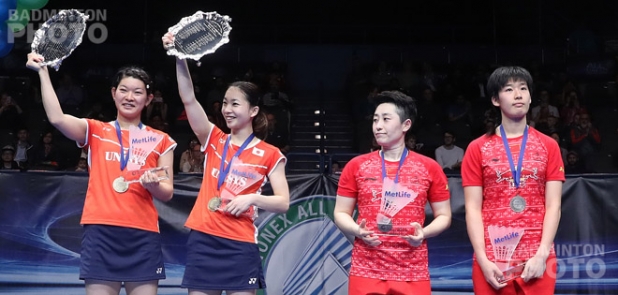
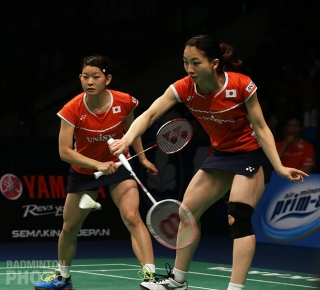
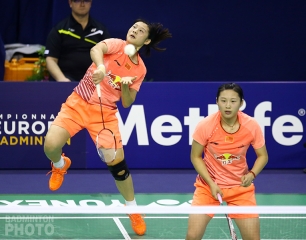
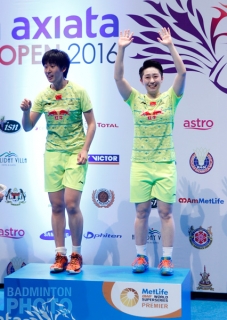
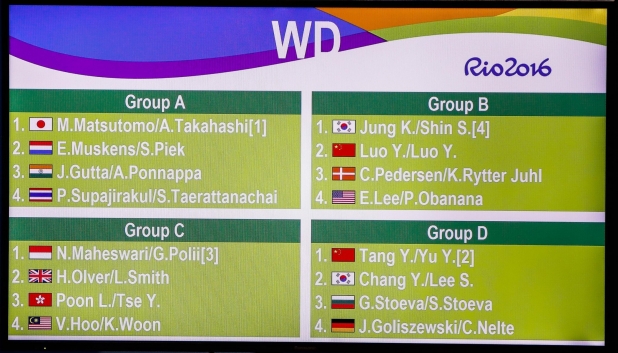
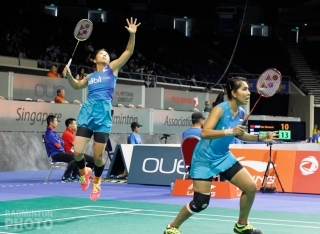
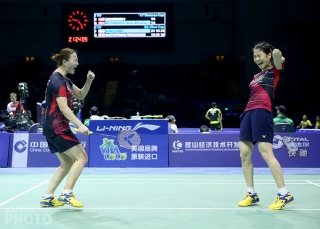
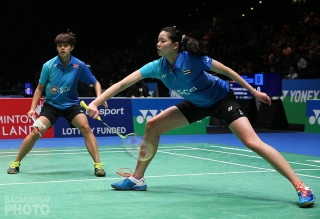
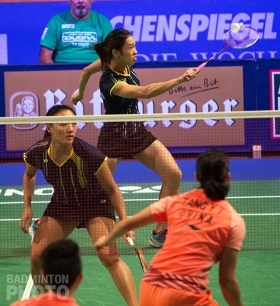
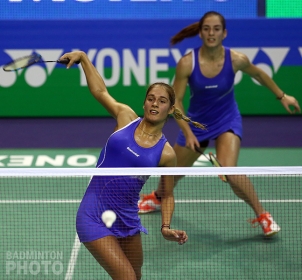
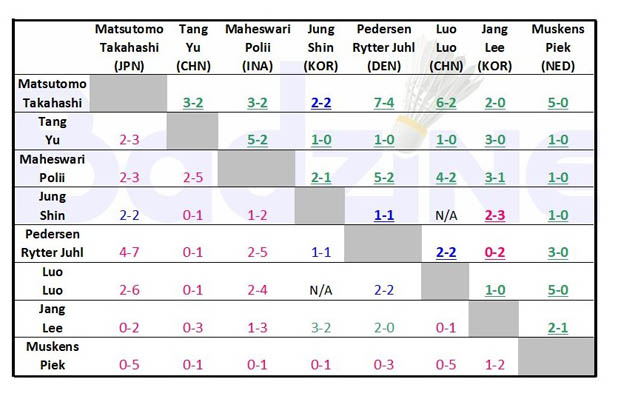

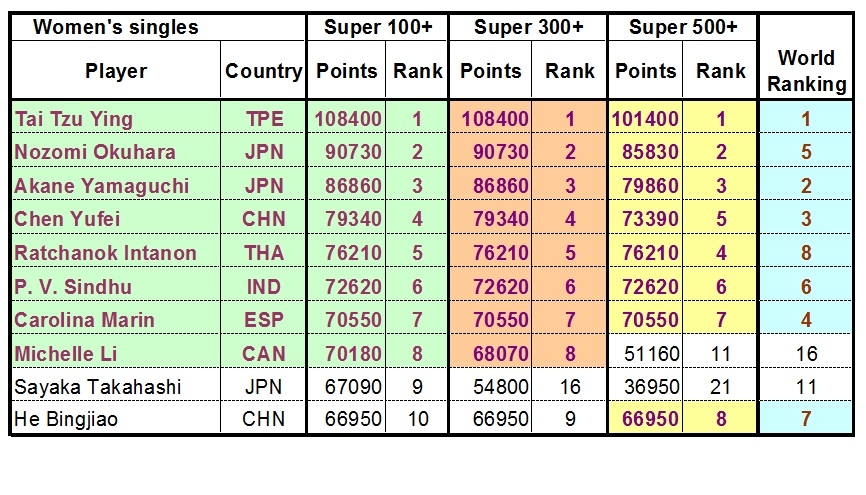
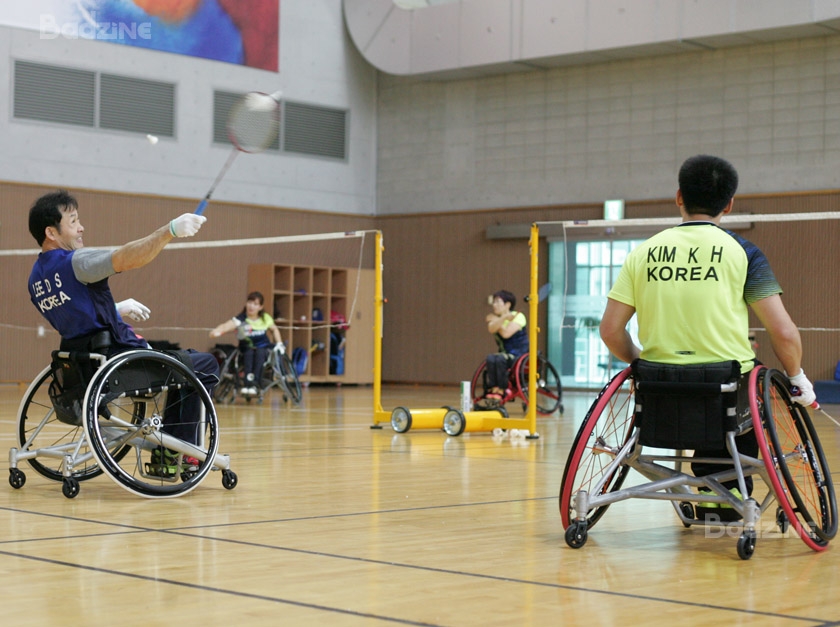
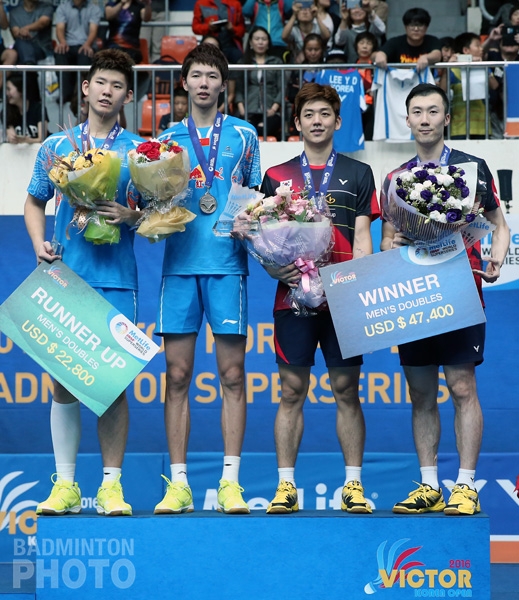
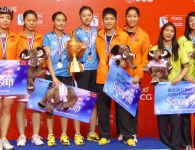
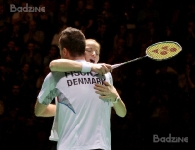

Leave a Reply